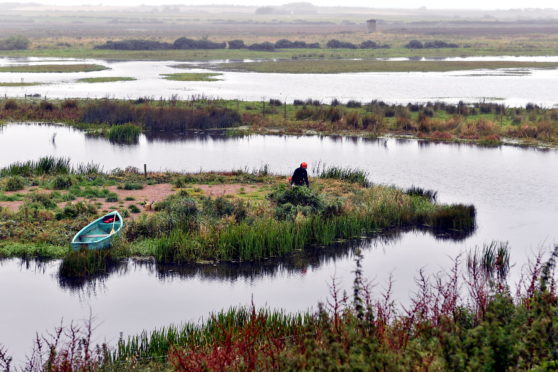A new hide that brings bird watchers closer to a north-east beauty spot has been officially opened.
The facility at Loch of Strathbeg near Crimond has been named after Jim Dunbar who was a warden and later site manager at the wetland.
It was funded by members of the Aberdeen and District RSPB through money raised from the sale of a local birding guide and a talk given by wildlife expert Chris Packman to mark the group’s 40th anniversary.
They worked with inmates and staff from HMP Grampian in Peterhead, who built the viewing structure at the super jail before transporting it to Strathbeg.
A group from social enterprise Aberdeen Foyer helped construct a new walkway.
Mark Sullivan the chairman of the Aberdeen and District RSPB Local Group said the hide was already proving a hit.
“Since completion, the hide has been getting visitors closer to fantastic wildlife such as otters and wintering bittern,” he said.
“We hope it continues to be a resource to be enjoyed by the local community and visitors to Strathbeg for many years to come.”
Richard Humpidge, RSPB Scotland’s site manager at Loch of Strathbeg, said: “It’s been really great to work with HMP Grampian, Aberdeen Foyer, the Aberdeen and District RSPB local group and others on this project and we are really grateful for their help and support.
It’s a great example of how by working together we can achieve so much more”.
Andy Cooper from HMP Grampian said the project would be the first of many for the prison.
“It is all about unlocking potential and transforming lives so getting involved in a good cause such as the Loch of Strathbeg hide project was a way for us to give back to the community,” he said.
“Those in our care were involved in the construction of the hide. Some of the men had never worked with wood before so the project turned out to be a great learning tool.”
Loch of Strathbeg is Britain’s largest dune loch and the wetland provides homes for more than 560 species.
It is the autumn home for thousands of wild geese, swans and ducks, while in spring and summer nesting gulls, terns and wading birds use it to raise their young.
